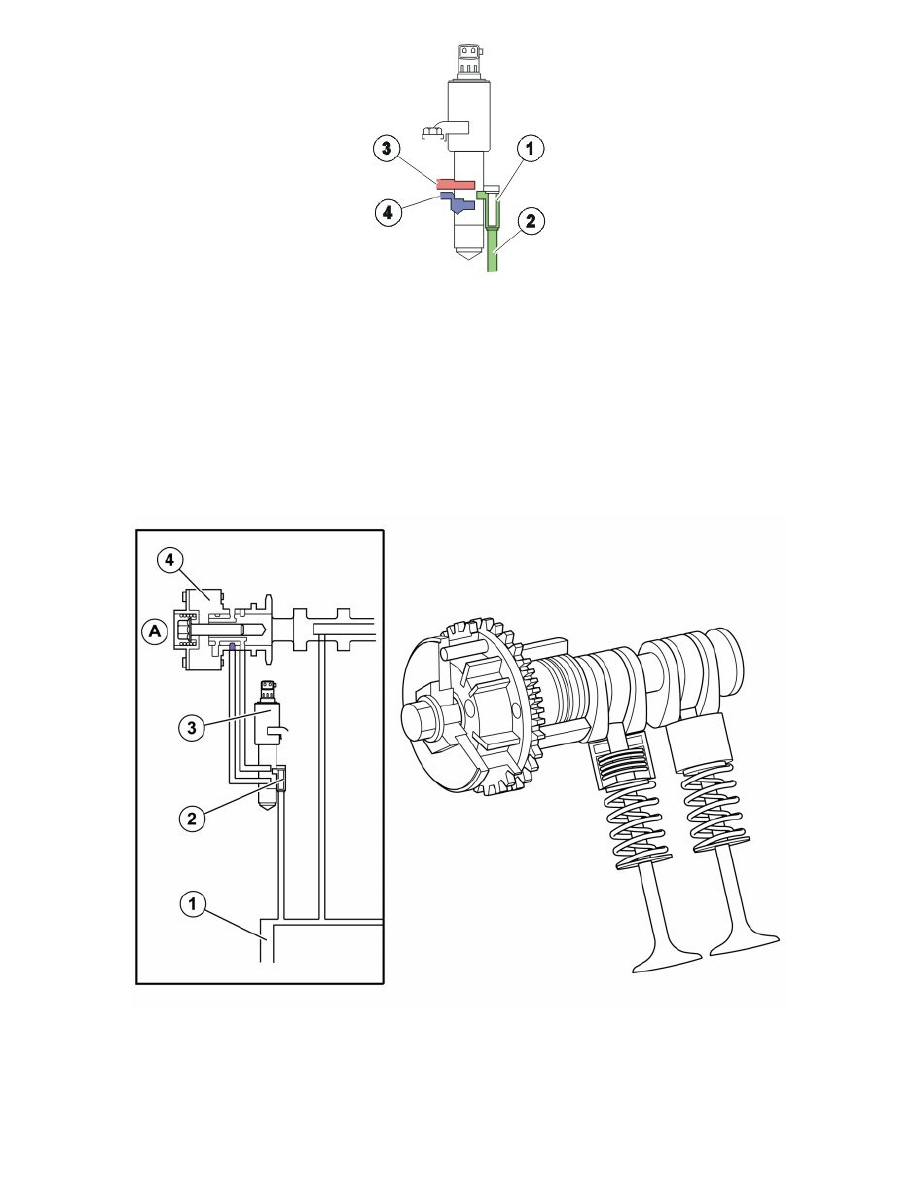XC70 AWD L6-3.2L VIN 98 B6324S (2009)

1. Oil filter reset valve camshaft.
2. Oil channel (pressure, inlet).
3. Channel connected with CVVT-unit's chamber (triggering).
4. Channel connected with CVVT-unit's chamber (re-triggering).
The camshaft reset valve controls the oil flow to the continuous variable valve timing (CVVT) unit. The engine control module (ECM) uses a pulse
width modulation (PWM) signal to control the valve. See also: Design See: Powertrain Management/Computers and Control Systems/Description and
Operation/Engine Control Module (ECM)/Design
The continuous variable valve timing (CVVT) unit allows the position of the camshaft to be adjusted relative to the crankshaft.
The camshaft is secured to the CVVT-unit's rotor. The rotor (and thus, the camshaft) can rotate in relation to the timing belt pulley by the oil pressure
building up on one or the other side of the rotor's vanes in the CVVT-unit.
Control occurs according to the following during deployment/return of the camshaft.
A: Inlet camshaft
-
Oil pressure from the lubrication system (1) of the engine.
-
The oil passes the filter for the camshaft reset valve (2) and then on to the reset valve (3).
-
The engine control module (ECM) controls the oil flow to one of the CVVT unit chambers (4) depending on whether it is to be deployed/returned
by the camshaft.
The reset valve is controlled by the engine control module (ECM) by high frequency, switching for deployment and return. This results in rapid and
precise control. The inlet camshaft can be triggered up to approx. 40 crankshaft degrees.
